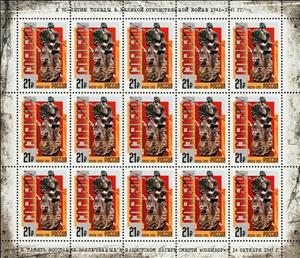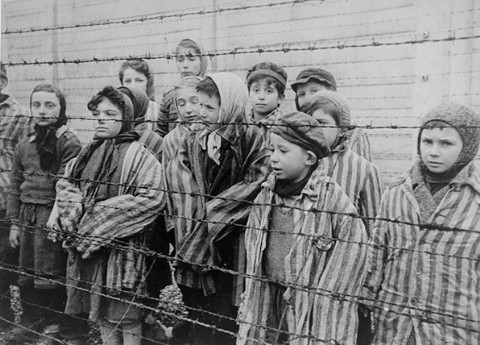Mini Sheet: The uprising in the concentration camp "Sobibor" (Russia 2015)
The uprising in the concentration camp "Sobibor" (Russia 2015)
30 October (Russia ) within release The uprising in the concentration camp "Sobibor" goes into circulation Mini Sheet The uprising in the concentration camp "Sobibor" face value 15*21 Russian ruble
| Mini Sheet The uprising in the concentration camp "Sobibor" in catalogues | |
|---|---|
| Michel: | Mi: RU 2238KB |
Mini Sheet is horizontal format.
Also in the issue The uprising in the concentration camp "Sobibor":
- Stamp - The uprising in the concentration camp "Sobibor" face value 21;
- Mini Sheet - The uprising in the concentration camp "Sobibor" face value 15*21;
Mini Sheet The uprising in the concentration camp "Sobibor" it reflects the thematic directions:
Internment is the imprisonment of people, commonly in large groups, without charges or intent to file charges. The term is especially used for the confinement "of enemy citizens in wartime or of terrorism suspects". Thus, while it can simply mean imprisonment, it tends to refer to preventive confinement rather than confinement after having been convicted of some crime. Use of these terms is subject to debate and political sensitivities. The word internment is also occasionally used to describe a neutral country's practice of detaining belligerent armed forces and equipment on its territory during times of war, under the Hague Convention of 1907
A monument is a type of structure that was explicitly created to commemorate a person or event, or which has become relevant to a social group as a part of their remembrance of historic times or cultural heritage, due to its artistic, historical, political, technical or architectural importance. Examples of monuments include statues, (war) memorials, historical buildings, archaeological sites, and cultural assets. If there is a public interest in its preservation, a monument can for example be listed as a UNESCO World Heritage Site. The Palgrave Encyclopedia of Cultural Heritage and Conflict gives the next definition of monument:
Sculpture is the branch of the visual arts that operates in three dimensions. Sculpture is the three-dimensional art work which is physically presented in the dimensions of height, width and depth. It is one of the plastic arts. Durable sculptural processes originally used carving (the removal of material) and modelling (the addition of material, as clay), in stone, metal, ceramics, wood and other materials but, since Modernism, there has been almost complete freedom of materials and process. A wide variety of materials may be worked by removal such as carving, assembled by welding or modelling, or moulded or cast.


